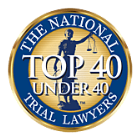5,000+
2,000+
5 Star
Bell's Palsy from a Vaccine
Fighting for Vaccine Injury Victims – Get the Compensation You Deserve
Bell’s Palsy after a vaccine is more than temporary paralysis—it causes visible facial change, emotional distress, and legal grounds for compensation. A Bell’s Palsy vaccine injury is one of the most visible and psychologically jarring neurological adverse events. In most cases, it begins within days of a COVID-19 vaccination—sudden facial paralysis, uneven smile, eye closure difficulty, or drooping features. For many, this follows the first dose or second dose of a COVID-19 vaccine and leads to intense social discomfort, anxiety, and fear of permanent change. Even when treated early, it affects your ability to work, speak, and be seen. While often temporary, the impact is real and well-documented.
Bell’s Palsy is not listed on the Vaccine Injury Table—but that does not stop you from bringing a claim. People have received compensation for Bell’s Palsy after vaccines, including the COVID-19 vaccine, as long as they could show when symptoms started and that no other cause was involved. This type of facial paralysis may not be permanent, but the timing, diagnosis, and personal impact matter. Whether it lasted a few weeks or never fully went away, your experience still qualifies. My Vaccine Lawyer helps you prove that—and build a case that holds up in vaccine court.

Awards and Associations
One of more of our attorneys have been recognized for the following:

Hear Cheryl's Vaccine Injury Story
Cheryl, a former client of My Vaccine Lawyer, shares her experience with Shoulder Injury Related to Vaccine Administration (SIRVA) following a flu shot. She describes the sudden onset of pain, limited shoulder mobility, and a long recovery process that led her to seek legal help from attorney Max Muller.
With his support, Cheryl filed a successful claim through the Vaccine Injury Compensation Program and received a settlement covering her medical expenses, lost wages, and pain and suffering. SIRVA symptoms typically include sudden pain within 48 hours of vaccination, restricted range of motion, and discomfort that can last for weeks or months.
Why Bell’s Palsy Following a Vaccination Should Not Be Ignored
Sudden Facial Weakness Requires Clinical Documentation
A diagnosis of facial nerve palsy must be captured at the first sign of facial weakness. This includes slurred speech, eye closure difficulty, and smile asymmetry. These symptoms may seem benign, but the clinical practice guideline for facial palsy recommends immediate documentation. This is what connects your case to a vaccine dose for legal review. Without a record from the start, the claim weakens.
Legal Claims Depend on What Is Ruled Out, Not Just What Is Found
Winning compensation means showing that other causes—like viral infections, Lyme disease, or stroke—have been excluded. That is where inclusion and exclusion criteria come into play. A neurologist’s ability to rule out other sources of facial nerve damage is crucial. That, paired with the right quality assessment and documentation, forms the evidentiary core of the claim.
Emotional Impact Is Part of the Injury—Not Separate From It
Bell’s Palsy is visible, abrupt, and isolating. Legal claims can include the psychological effect of being facially paralyzed, even temporarily. This is especially true for those whose Bell’s Palsy remains unresolved or those experiencing recurrent Bell’s Palsy. These cases are supported by data from meta analysis, review and meta analysis, and psychological outcomes in neurological complications. Incomplete recovery is not just physical—it creates visible suffering and should be documented as part of your claim.
If Bell’s Palsy changed your ability to speak, smile, or be seen after vaccination, let us help you file the claim that shows the full impact.
We are the Highest Rated Vaccine Injury Law Firm in the Country!
SEE OUR NOTABLE SETTLEMENTS
See some of our vaccine injury settlements in the VICP.
See Vaccine Settlements Here
MEET MAX
Max is a founding Partner of My Vaccine Lawyer and has been a Super Lawyer for 11 years straight.
Meet Max
MEET PAUL
Paul is a founding Partner at My Vaccine Lawyer and has been featured in the Washington Post and CBS News for his accomplishments.
Meet Paul
Treatment, Recovery, and the Real Cost of Bell’s Palsy Vaccine Injury
Most Bell’s Palsy patients are prescribed high-dose corticosteroids. A 10-day course averages $120–$250. If the case is more complex, interferon therapy or antivirals may be added, pushing that cost higher. But the expense is not just medical—it’s psychological. Therapy, sick leave, and social withdrawal are common.
Recovery times vary. Some patients improve within weeks. Others show slow, uneven recovery over months, especially in cases of left Bell’s Palsy or bilateral facial nerve palsy. The impact extends beyond clinical definitions. Bell’s Palsy following COVID-19 vaccination often includes fear of recurrence, public discomfort, and reduced work participation. That is part of the injury and should be recorded.
How My Vaccine Lawyer Builds Strong Bell’s Palsy Claims
We prepare off-table cases by showing onset, ruling out other causes, and highlighting the human cost. Bell’s Palsy is a rare association, but it is real—and it has been seen consistently in neurological adverse events reported across trials and systematic review data. We use that evidence. Our process includes assembling vaccination records, symptom timelines, and professional review through the preferred reporting items standard.
The Vaccine Injury Compensation Program (VICP) has awarded payment to people who developed facial paralysis after vaccines like the COVID-19 vaccine, even when the condition was temporary. What matters is proving when the symptoms began, showing it was linked to a covered vaccine dose, and ruling out other causes. These are called off-table cases—and they require precise evidence. The VICP covers lost wages, treatment, and visible or lasting effects. Your compensation reflects your specific experience. We handle your case through vaccine court, file in the proper jurisdiction, and gather everything needed—including confirmation of acute neurological events and timelines consistent with following COVID-19 vaccination. Your legal case is real, even if your symptoms have improved.
Speak to a vaccine lawyer who knows how to turn a Bell’s Palsy diagnosis into a fully supported compensation claim.
Speak With A Lawyer Now!
Get a Free Consultation & See What Your Claim Is Worth
Have your case evaluated directly from one of our vaccine lawyers.
The Legal Process for Vaccine Injury Cases
Vaccine injury cases follow a unique legal process. Since these claims are handled under the VICP, they require an attorney with experience in federal vaccine litigation. At My Vaccine Lawyer, we start with a free consultation to assess your claim. We then gather medical records, expert testimony, and supporting evidence to build a strong case. If a fair settlement isn’t offered, we are prepared to take your case to trial.
1. Contact Your Doctor
If you suffered a vaccine-related injury, adverse effects or worsening symptoms, call your doctor immediately.
Still Have Questions?
-
If studies say there is neither a causative relationship nor conclusive proof, does that hurt my case?
Not necessarily. When a study concludes there is neither a causative relationship, it usually means the data was not strong enough to make a universal statement—not that the event did not occur. Legal claims under VICP rely on individual medical records, not only large-scale data. The control group, statistical analysis, and search strategy behind these papers affect their outcome—but your personal medical evidence carries more weight in court.
-
What does ‘further research is needed’ actually mean for vaccine injury claims?
It means this injury is being taken seriously enough to study—and that works in your favor. Ongoing further research into SARS-CoV-2 vaccination, especially involving Bell’s Palsy, helps build recognition. Trials from groups like Harvard Medical School, reports using the quality assessment tool, and reviews by the World Health Organization all contribute to the growing medical record. When attorneys file claims for immune mediated neurological events, citing these sources supports your case’s plausibility.
-
What if my facial paralysis was bilateral or lasted longer than a few weeks?
Bilateral facial palsy or prolonged symptoms are both legally significant. Most cases are one-sided and resolve within weeks. If yours involved both sides or showed signs of relapse, your claim reflects a more serious event. These cases are backed by stronger precedent and carry higher value in compensation due to the increased impact and recovery time.
-
Does the brand of vaccine I received (e.g., Oxford-AstraZeneca) matter in my legal claim?
The VICP does not limit claims by brand. Oxford AstraZeneca has been associated with rare adverse events, but so have mRNA vaccines. What matters is whether Bell’s Palsy following COVID-19 vaccination is medically documented and fits the expected pattern in timing and diagnosis. That is what qualifies a case—not manufacturer.
-
Could my Bell’s Palsy be part of something bigger, like an autoimmune neurological syndrome?
It could. In some patients, Bell’s Palsy appears alone. In others, it can indicate broader autoimmune neurological syndromes or be part of a post-SARS-CoV-2 infection response. These are treated differently by neurologists and lawyers alike. Your attorney should screen for these possibilities to determine if the injury stands alone—or as part of a wider set of neurological complications tied to vaccination.
Recent Blogs
What is the NCVIA?
Paul Brazil: Nov 10, 2025
Frozen Shoulder After Vaccine
Max Muller: Nov 5, 2025
How to File a VICP Claim
Max Muller: Nov 3, 2025